It is more appropriate to say a people love their city – but in my mind, Istanbul is so much its own entity, with its deep history only fleetingly shared by its current inhabitants.
Istanbullular (the people of Istanbul) love flowers. In early spring, the title for this post popped into my head as we were out walking.
It was barely past winter and obviously municipal workers had been planting. A lot. This is a different phenomenon from residents trying to cure winter cabin fever by planting blooms. It is public and pervasive. It represents investment, identity, and political will.
I began noticing the flowers before it was tulip-time, but the tulip is the embodiment of spring for Istanbul. Tulips are a reconnection to the Ottoman past. From about 1730, when mobs destroyed the lavish gardens of Sultan Ahmet III until the 1960s, when a special garden in Emirgan Park was created, Istanbul’s tradition of tulip cultivation was suspended. Tulip gardens that had lined the Bosphorus disappeared.
We kept hearing about the display in Emirgan Park, although tulips are all over, everywhere. Since 2006, the Istanbul Metropolitan Municipality has planted millions of tulips from November to April each year in preparation for the annual tulip festival. 2013 is the 8th year of the festival. For this festival 14,420,000 tulips of 270 varieties have been planted in parks, gardens, avenues, roundabouts, and rest and walking areas in the city.
Hilly and beautiful Emirgan Park on the Bosphorus on the European side is the main venue. With the addition of other bulbous plants, such as hyacinth and amaryllis, 20 million plants have been planted in that park alone. On Wednesday April 10, Jim and I marveled at the display on a sunny, but chilly day—not too chilly for a Mado dondurma (ice cream) cone, however.
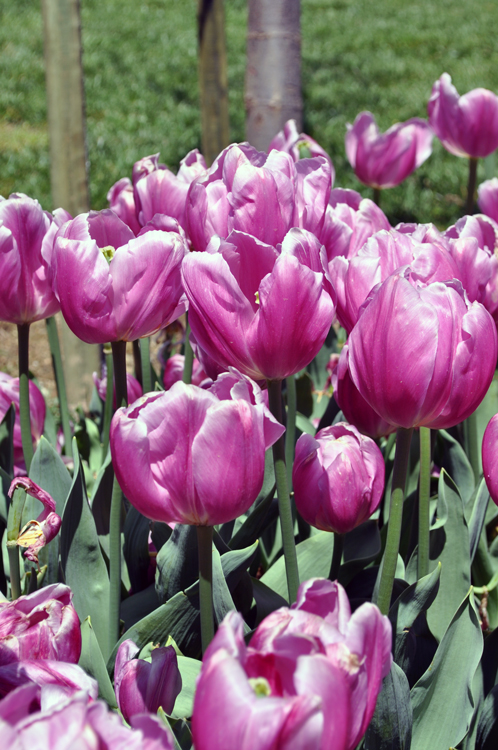
The variety is breath-taking. These were earlier ones, beginning to curl. Bulb planting is sequential so that blooms will continue from late March through April.
Tulips are so associated with the Netherlands that tulip bulbs are sold as souvenirs in the Amsterdam airport. However, the tulip, lale, in Turkish (from Persian lâleh) is indigenous to the central Asian steppes, primarily the Pamir, Hindu Kush and Tien Shan mountains. The Ottomans (1299-1923) cultivated them and brought them to their capital city Istanbul, where they were planted in the gardens of palaces and the elite.
The Lâle Devri (tulip Age) period of Ottoman history, during the reign of Sultan Ahmet III saw an explosion of passion for the bloom, from its actual presence in gardens to its appearance in costume and ceramics. Reportedly the sultan so loved the gardens that for an evening party, tiny lanterns were strapped to tortoise’s shells and they slowly roamed through the flowers. Imagine! The flowers came to signify commodity culture and excess and most were destroyed in the Patrona Halil Revolt in 1730.
Nearby societies also adore the flower. In Persia, lovers declared their love with a red tulip, whose black center represented the lover’s heart burned to coal by passion. Yellow tulips signified helpless and utter devotion.
In Emirgan Park, flowers are arranged in all variety of beds and shapes, forming the Turkish flag, waves, dolphins, and stylized tulips for example. The park itself, at one time a private backyard for a sultan’s magnificent wooden yalı (seaside mansion) now includes three restored 19th century pavilions originally built as hunting and guest lodges. It remained private property until granted to the city in the 1940s.
Ottomans cultivated more than 1800 varieties of tulips. The first tulip seeds and bulbs are thought to have been sent by an ambassador to the sultan of Turkey to Europe in 1554, but the flower became popular due to Dutch botanist Carolus Clusius’ work at the University of Leiden around 1593. Tulips were exotic and different from other European flowers of the time, and demand grew quickly.
There are single hued tulips and wild multi-colored varieties. The exotic varieties are produced by the “tulip breaking virus”, which “breaks” the plant’s lock on a single color. It takes 7-12 years to grow to a flower producing bulb from a seed, and since the virus only operates on a bulb, the exotic, highly valued “broken” flowers can only be produced from the few “offset” buds that grow from a bulb each year, not seeds that are harvested from flowers. Because the virus also weakens the bulb, fewer offset bulbs are created, making the most exciting flowers very rare. Tulip Mania, a speculative bubble of tulip bulbs brought the Dutch economy to its knees in 1636-37.
Here this spring, I began noticing beautifully planted flower beds in early March, and tulips blooming at the end of March. On our morning walk, Lucy called my attention to an attractive group of sidewalk planters…she thought they would be really nice to walk – and maybe do other things – in. I redirected her and took out my camera.
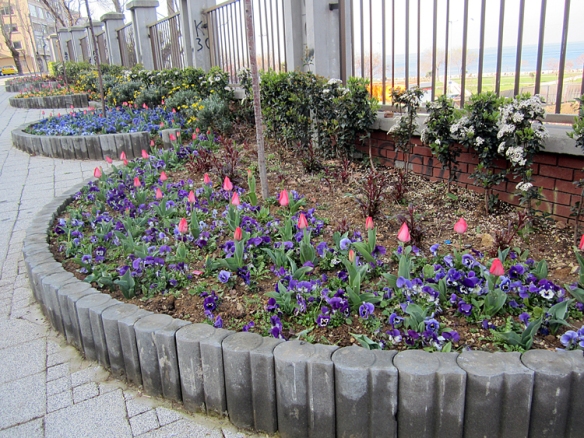
This photo was taken at the end of March. Today the tulips are white fluffy ones. There are a few red petals left, and some yellows that bloomed in between the reds of March and the whites of now.
I love watching as urban areas don their spring attire, and Istanbul is in a class of its own. I remember long dense beds of tulips blooming in the median on Park Avenue in New York, flowers beds in Rockefeller Center, residents planting their window boxes and the flowering trees lining the neighborhood streets. A big event was commercial, the annual Macy’s flower show filling their Herald Square main floor.
Last spring we enjoyed the magnificent spring plantings in Buchart Gardens on a visit to Victoria, British Columbia. In the northern California suburbs, spring is a more private celebration. I enjoyed noting the daffodils sprouting on highway 280 – some years ago someone planted bulbs on gentle ridges along the freeway, and we always joined the many people buying backyard annuals at plant nurseries in April.
Here in Istanbul, though, it is SO public, exuberant, coordinated…and gorgeous. The planting is staged so that beds will have new blooms emerging as earlier ones fade. Emirgan Park is the main venue, but not the only park to be full of tulips, not to mention the bloomers that adorn expressways, main roads and most any little triangle of dirt anywhere. Too bad each tulip only lasts about a week.

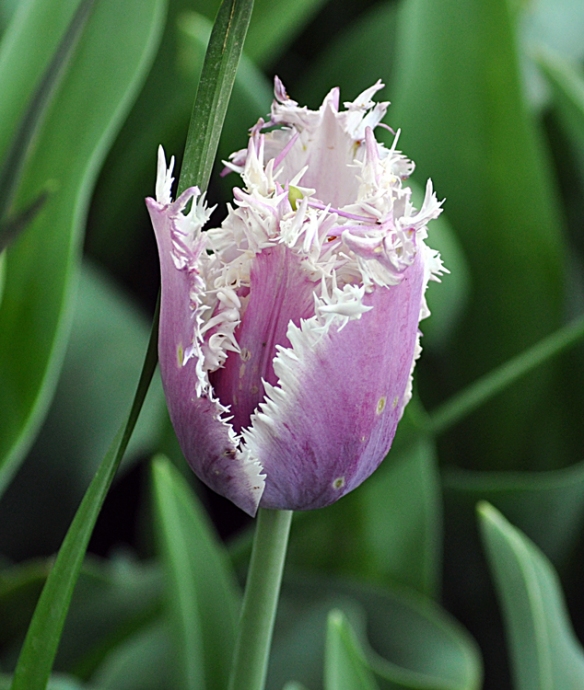
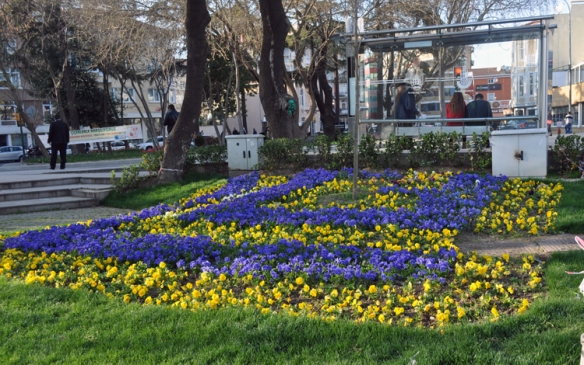
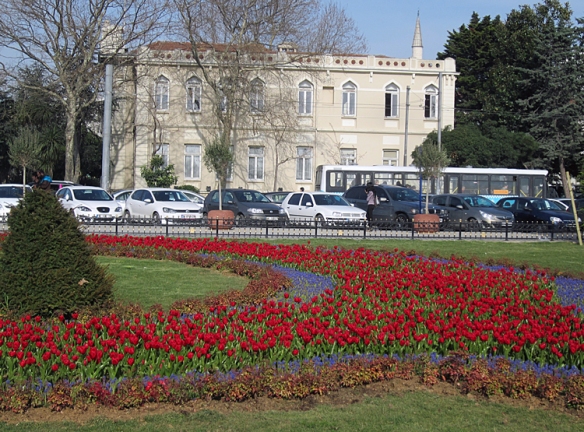
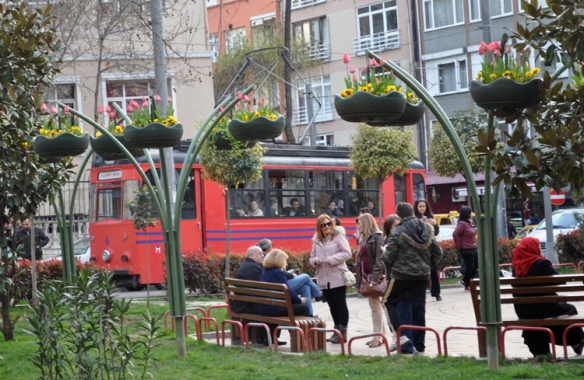
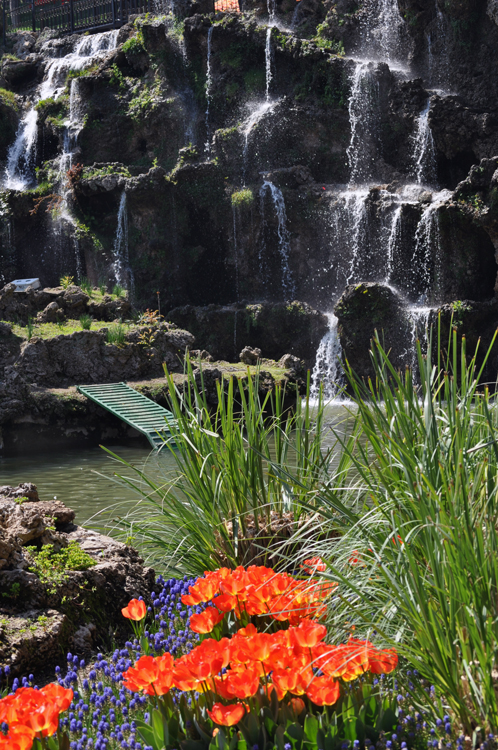

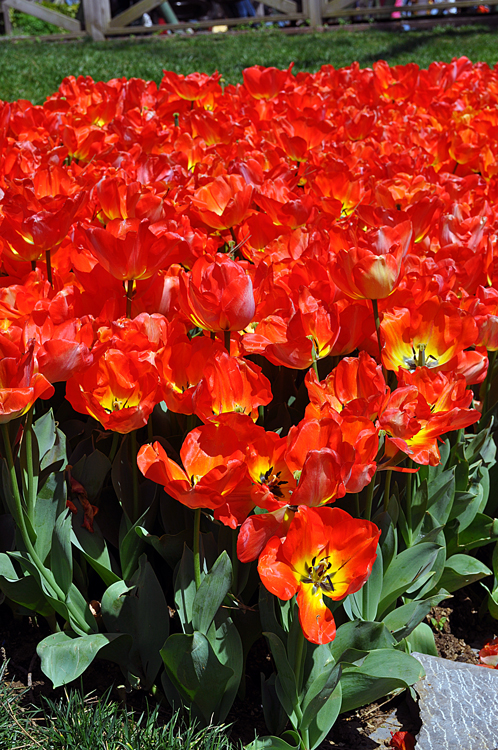
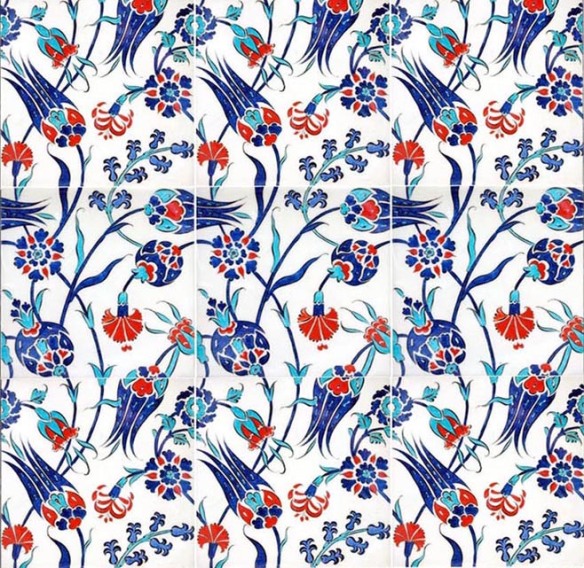
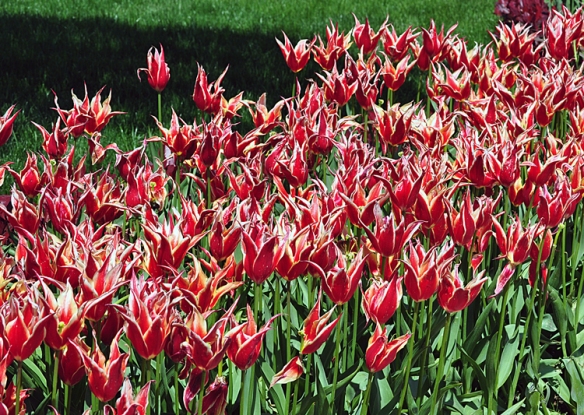
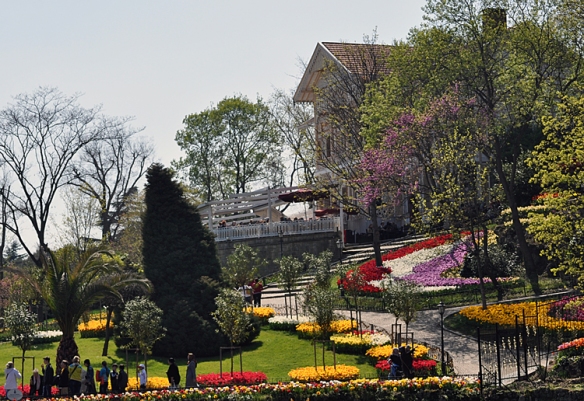
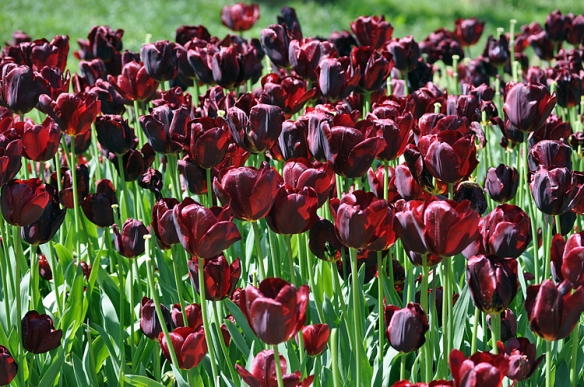
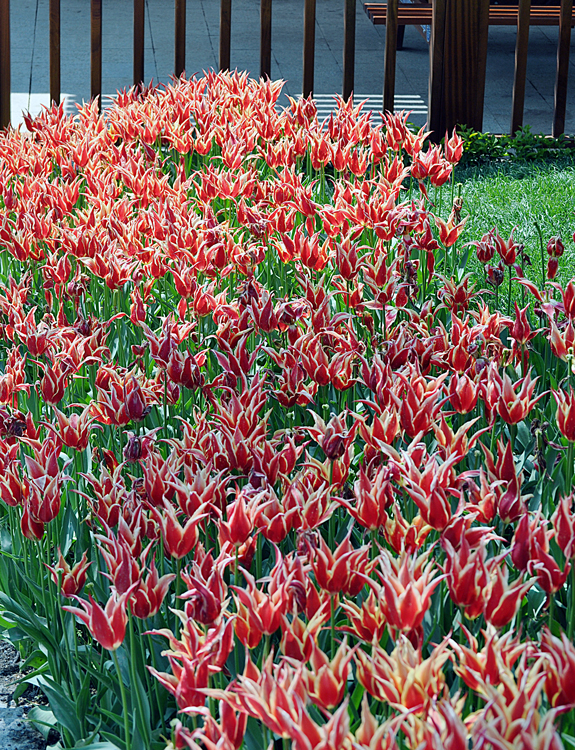
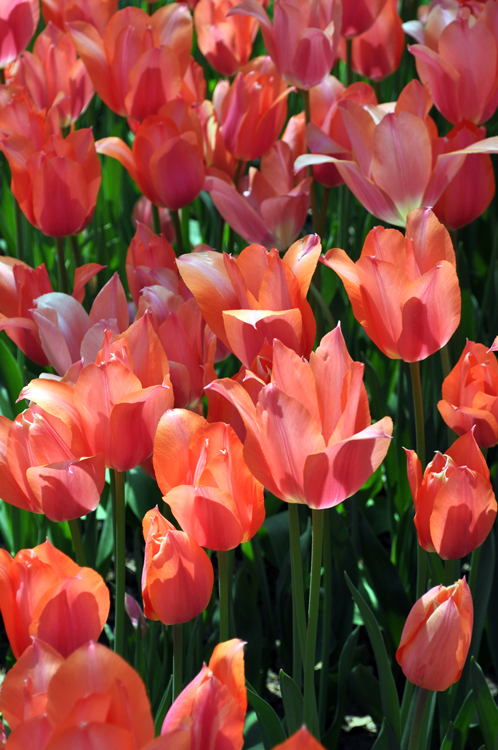
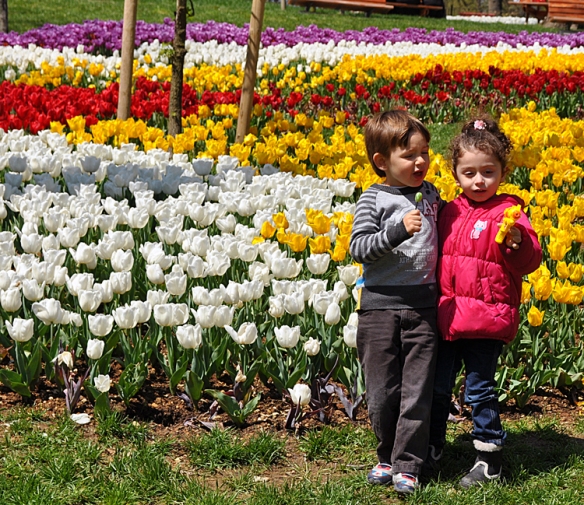
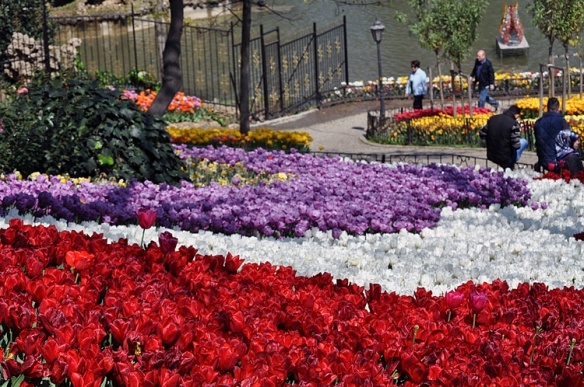
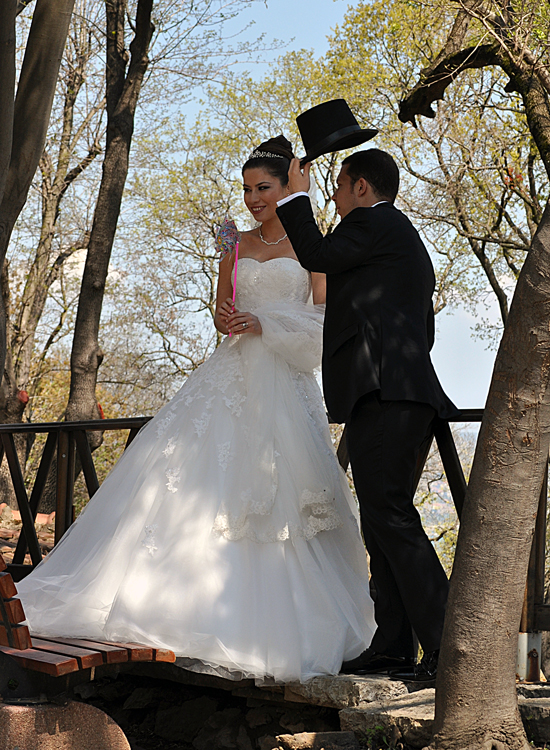
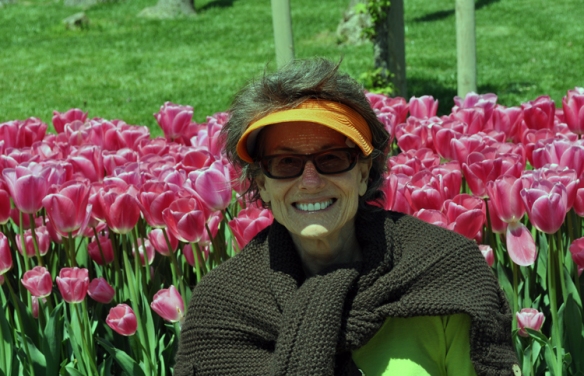
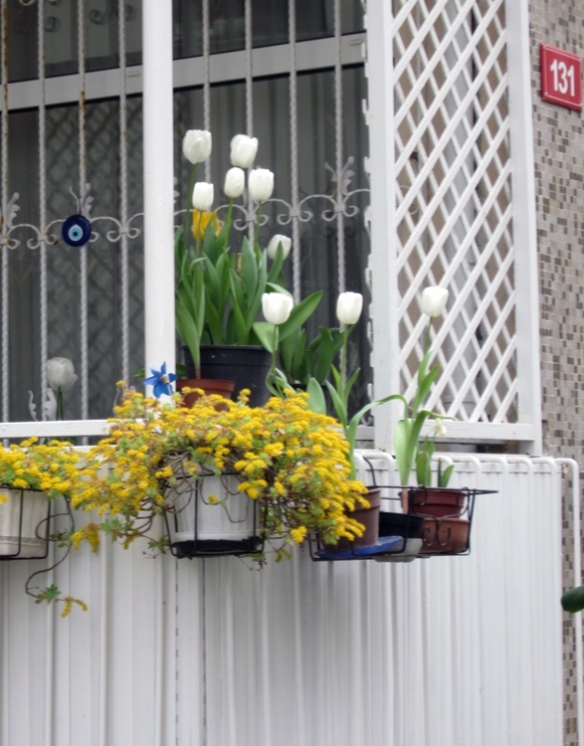

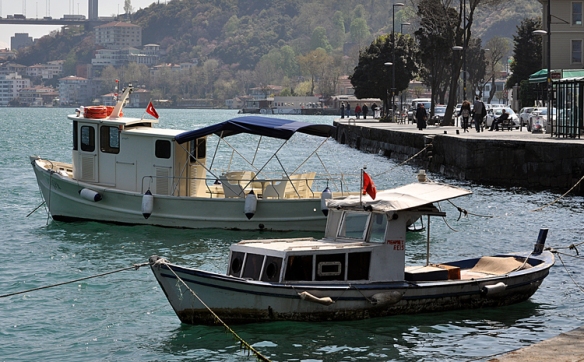
Tricia, For me, 10 hours in Istanbul would only be a frustration and a tease! I wouldn’t know where to begin 🙂
LikeLike
Love your descriptions and pictures! It’s great looking at Istanbul through your eyes…much different from our 10 hour day of touring from a cruise ship many years ago.
LikeLike